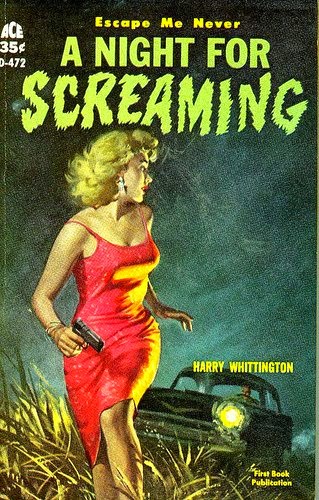|
Posted: 26 Sep 2014 11:36 AM PDT
In July 2009 Hard Case Crime reissued a cold war era thriller titled Passport to Peril, which at face value isn’t unusual, but what is unusual is the name of its author: Robert B. Parker. Unusual because it is a shared name with the creator of the Spenser novels, but very definitely not the same man or writer.
Passport to Peril is an early example of the cold war thriller. It was originally published by Rinehart & Co. in 1951, which predated the earliest James Bond novel,Casino Royale, by two years. John Stodder is an American journalist traveling to communist Budapest on a false Swiss passport purchased in Vienna. Stodder assumed the name, Marcel Blaye, was a figment of the forger’s imagination, but the passport is no forgery. It belonged to a man murdered in Vienna. A man with ties to both Soviet-bloc agents and the remnants of fascist Germany.
When Stodder realizes he is traveling on the passport of a dead man he jumps the train just inside the Hungarian border, which sets off a series of events that includes pursuit by communist Russians, fascist Germans, and eccentric American secret agents. He also finds a love interest in Marcel Blaye’s traveling secretary.
Passport to Peril is a well-paced, exciting and, unfortunately, flawed novel. The plot is complex and executed with brevity and a crisp, exciting (and almost believable) style. The opening pages are overly dependent on dialogue, but around page 50 everything changes. The dialogue is clipped, and the story is shown rather than explained.
The pacing is nearly perfect for the majority of the novel, which allows the reader to forgive the novel’s excesses—the early reliance on dialogue, awe inspiring coincidences, the clockwork timing of the American secret agents, and the suspiciously intermingled resolution of Stodder’s private reason for traveling to Budapest and the complex intrigue Marcel Blaye’s passport unwittingly dragged him into.
The cover art is by Hard Case Crime regular Gregory Manchess, and it is one of my favorite. The cold colors give atmosphere to a really cool (pun intended) scene. The cover has more than just a passing resemblance to the Robert Maguire cover of the Ace edition of Harry Whittington's 1960 A Night for Screaming. |
Friday, September 26, 2014
PASSPORT TO PERIL by Robert B. Parker Gravetapping Ben Boulden
Subscribe to:
Post Comments (Atom)




No comments:
Post a Comment